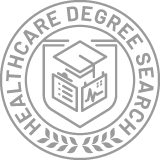Graduate Certificates in Diagnostic Medical Sonography/Sonographer and Ultrasound Technician
Education Levels of Diagnostic Medical Sonography/Sonographer and Ultrasound Technician Majors
During the most recent year for which data is available, 6 people earned their graduate certificate in diagnostic medical sonography/sonographer and ultrasound technician. This makes it the 113th most popular graduate certificate program in the country.
The following table shows the number of diplomas awarded in diagnostic medical sonography/sonographer and ultrasound technician at each degree level.
| Education Level | Number of Grads |
|---|---|
| Associate Degree | 4,023 |
| Undergraduate Certificate | 1,262 |
| Bachelor’s Degree | 883 |
| Basic Certificate | 103 |
| Graduate Certificate | 6 |
| Master’s Degree | 3 |
Earnings of Diagnostic Medical Sonography/Sonographer and Ultrasound Technician Majors With Graduate Certificates
We are unable to calculate the median earnings for diagnostic medical sonography/sonographer and ultrasound technician majors with their graduate certificate due to lack of data.
Student Debt
The data on debt ranges for diagnostic medical sonography/sonographer and ultrasound technician majors who have their graduate certificate is not available.
Student Diversity
More women than men pursue their graduate certificate in diagnostic medical sonography/sonographer and ultrasound technician. About 100.0% of graduates with this degree are female.
| Gender | Number of Grads |
|---|---|
| Men | 0 |
| Women | 6 |

The racial-ethnic distribution of diagnostic medical sonography/sonographer and ultrasound technician graduate certificate students is as follows:
| Race/Ethnicity | Number of Grads |
|---|---|
| Asian | 1 |
| Black or African American | 0 |
| Hispanic or Latino | 1 |
| White | 4 |
| International Students | 0 |
| Other Races/Ethnicities | 0 |

Most Popular Diagnostic Medical Sonography/Sonographer and Ultrasound Technician Programs for Graduate Certificates
There are 3 colleges that offer a graduate certificate in diagnostic medical sonography/sonographer and ultrasound technician. Learn more about the most popular 3 below:
University of Nebraska Medical Center tops the list of the most popular school in the U.S. for diagnostic medical sonography/sonographer and ultrasound technician majors who are seeking their graduate certificate. The average in-state tuition for full-time undergraduates is $11,340 per year, while in-state graduate students, on average, pay $9,207 per year. During the most recent year for which we have data, 4 people received their graduate certificate in diagnostic medical sonography/sonographer and ultrasound technician from UNMC. Around 20% of these students were from an underrepresented racial-ethnic group, and 100% were women.
The most popular school in the United States for diagnostic medical sonography/sonographer and ultrasound technician students seekinga graduate certificate is Seattle University. The average in-state tuition for full-time undergraduates is $53,235 per year, while in-state graduate students, on average, pay $15,012 per year. During the most recent year for which we have data, 4 people received their graduate certificate in diagnostic medical sonography/sonographer and ultrasound technician from Seattle U. Around 100% of these students were from an underrepresented racial-ethnic group, and 100% were women.
Explore Major by State
Alabama
Arkansas
Connecticut
Florida
Idaho
Iowa
Louisiana
Massachusetts
Mississippi
Nebraska
New Jersey
North Carolina
Oklahoma
Rhode Island
Tennessee
Vermont
West Virginia
Related Majors
Below are some popular majors that are similar to diagnostic medical sonography/sonographer and ultrasound technician that offer graduate certificates.
| Major | Annual Degrees Awarded |
|---|---|
| Physician Assistant | 27 |
| Gene Therapy | 23 |
| Allied Health/Treatment Professions | 22 |
| Athletic Training | 19 |
| Medical Radiologic Technology | 12 |
References
*The racial-ethnic minority student count is calculated by taking the total number of students and subtracting white students, international students, and students whose race/ethnicity was unknown. This number is then divided by the total number of students at the school to obtain the percentage of racial-ethnic minorities.
More about our data sources and methodologies.


